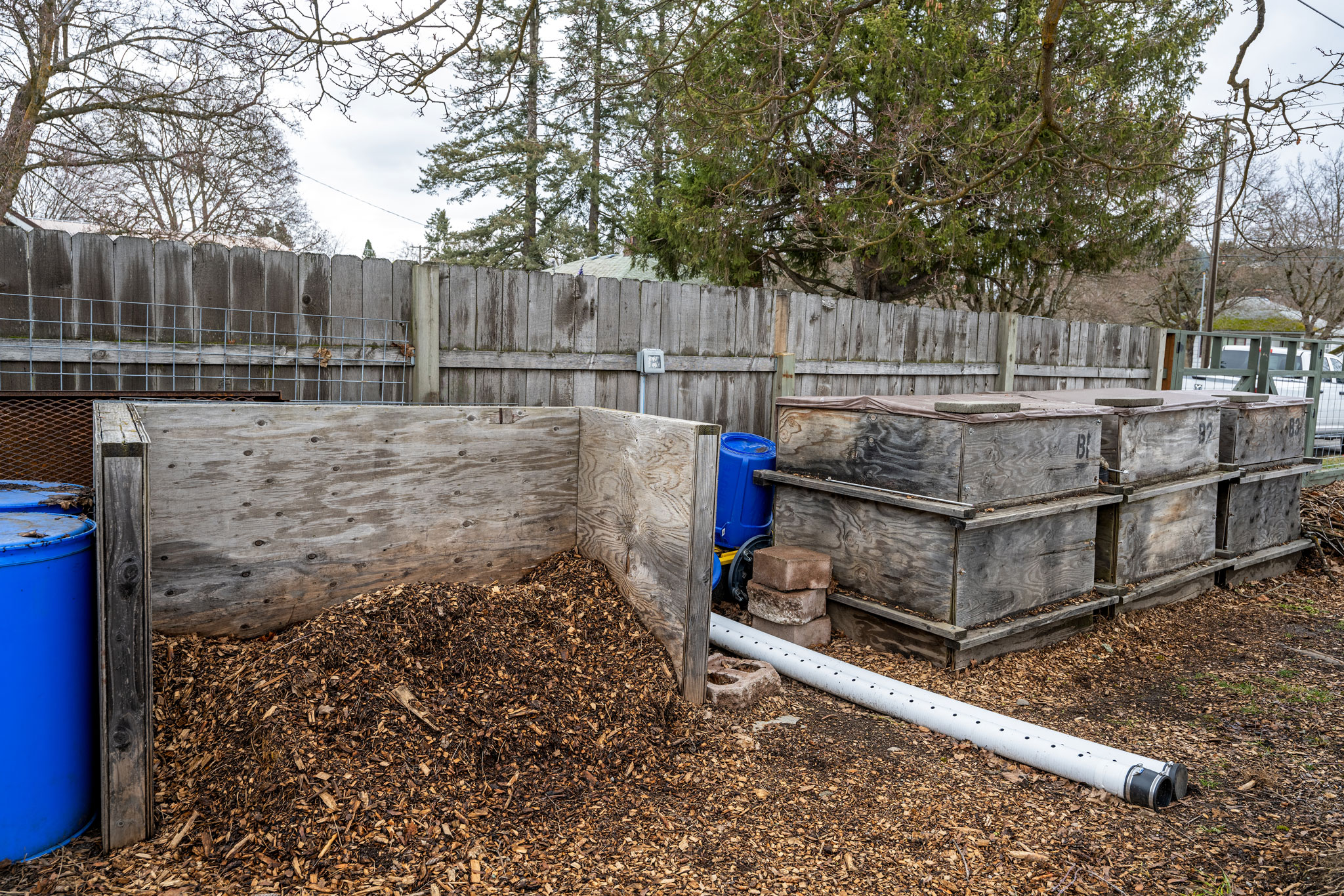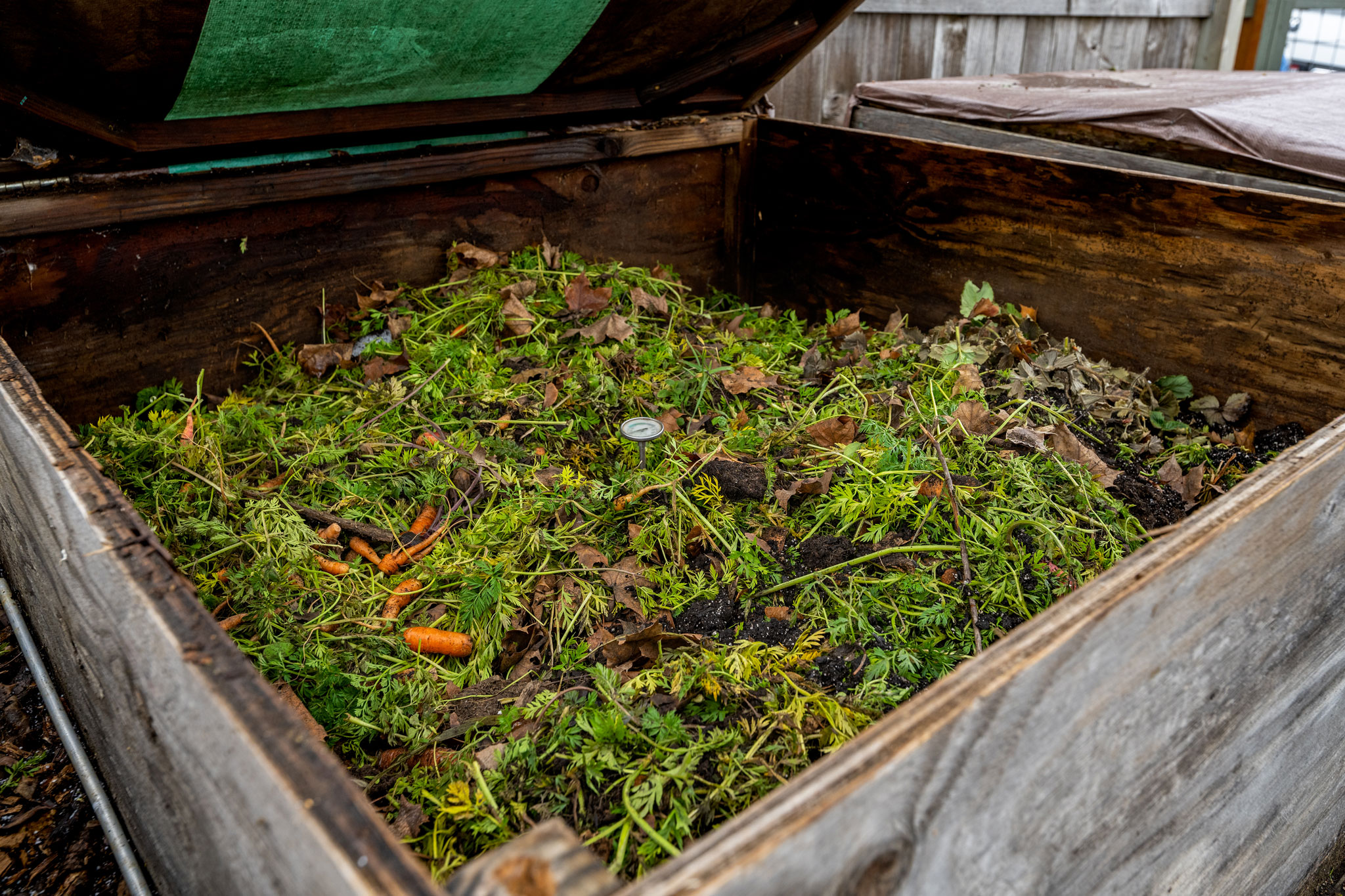Making your own compost is probably the most important and beneficial thing you can do for your organic garden. The success of your garden depends on the health of your soil, and the health of the soil depends on how you feed and amend it. Fertilizers can add both macro and micronutrients to the dirt, but nitrogen, phosphorus, potassium, and other nutrients are not typically in a form that can be readily ab-sorbed by the plants. Compost fosters a holistic array of organisms, including good bacteria, fungi, nematodes, worms, and protozoa, that convert nutrients into bio-available forms and build structure within the soil to maximize air and moisture flow as well as create an oxygen-rich, slightly acidic environment ideal for both plants and organisms to thrive.
Compost can be purchased in a variety of forms, but the best compost for your garden is the concoction you cook up yourself, whether it’s solid or a compost tea.
What Can I Compost?
Most organic waste can be compost-ed, but not all are ideal for home com-posting. Do compost kitchen scraps, coffee grounds, cardboard, newspaper, wood chips, lawn trimmings, leaves, and straw. Don’t compost pet waste, bones, meat, diseased plants, or un-wanted weeds. The following plants aren’t recommended for compost, can take over your garden, and are tough to kill: morning glory, buttercup, quack grass, comfrey, and mint.
Story continues after a quick message from our sponsor below.
What Bin Should I Use?
The most basic compost system consists of two to three bins of any size made of wood and wire. With more than one bin, you can easily turn your compost and keep it healthy. (See composting steps below.)
Commercial composters, like the spinning barrels you see at the hard-ware store, are great for keeping out pets and wildlife and make it easy to mix your pile. They can be worth the expense if you’re limited on space.
Low tech composters sit on the ground and are easy to move. They are constructed to be breathable while allowing worms and bugs to work their way into the pile and help with the process. Worm composting is considered an excellent natural method, and worm castings are desirable for many gardeners.

5 Steps to Easy Composting
- Shred and Chop
Whether you’re working with kitchen veggie scraps or end of season tomato plants, shredding or finely chop-ping everything that goes into your compost pile will speed up the process. - Combine Dry and Wet
A good compost mix contains ingredients rich in carbon and rich in nitrogen. Dry, brown materials, like dead leaves, hay, and straw, are rich in carbon. “Wet greens”, like grass clippings and kitchen scraps, are nitrogen-rich. Choose a variety of browns and greens, mix them well, and you’ll have a balance of nutrients. - Size Matters
Your compost pile should be at least 3’ x 3’ x 3’ to promote the amount of heat needed for healthy decomposition. Too big, and it will be difficult to mix. Too small, and it won’t “cook.” - Water Your Pile
Make sure your compost stays moist but not soggy. It should feel like a damp sponge to the touch. If you live in a wet climate, you may need to cover it with a tarp to prevent it becoming too wet. - Mix It Up
Turning and mixing your compost adds air, which is needed for organisms to thrive and moisture to flow. Movement also inhibits the growth of bad bacteria and molds. If using wood and wire bins, poke the sides and top with a pitchfork to open up air holes. Use a shovel to move compost from one bin to another, turning the inside out. Tumblers make mixing compost as simple as a few turns of the handle.
» Kitchen Composting
A simple way to start composting and reduce food waste is to kitchen compost. Blend or chop any scraps and dispose of them in a countertop compost bin or breathable pail (avail-able online). This can also start the composting process, if you have out-door bins. Add a stacking worm farm for a steady supply of humus to break down your countertop compost. N
By S. Michal Bennett
Photography By Joel Riner
As Featured In: 2022 Home Edition



